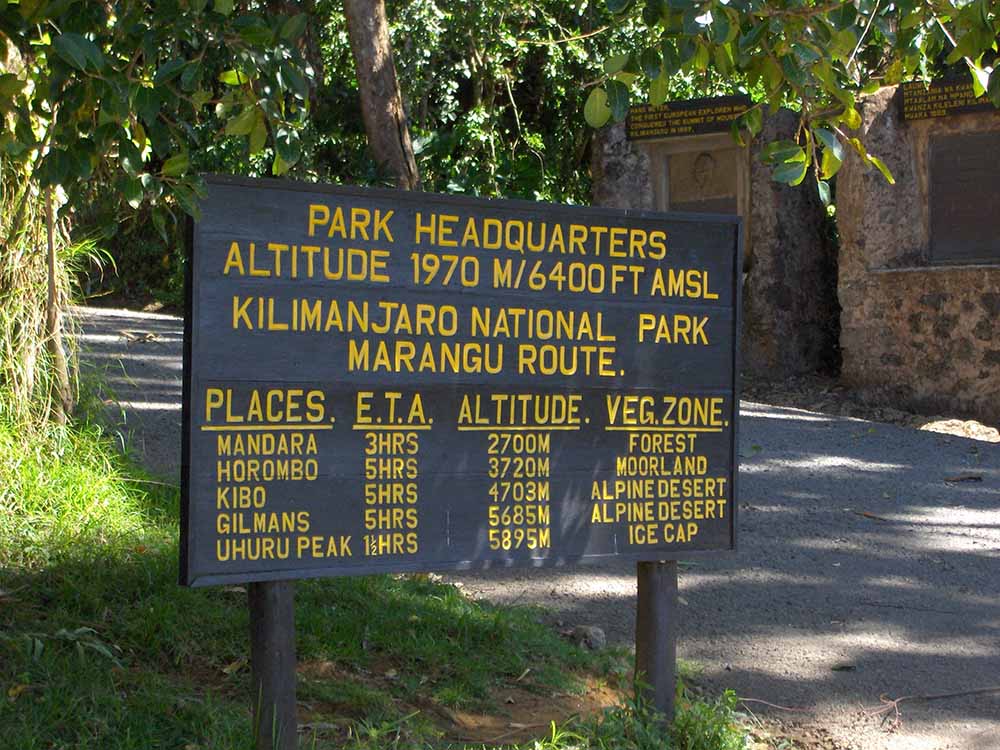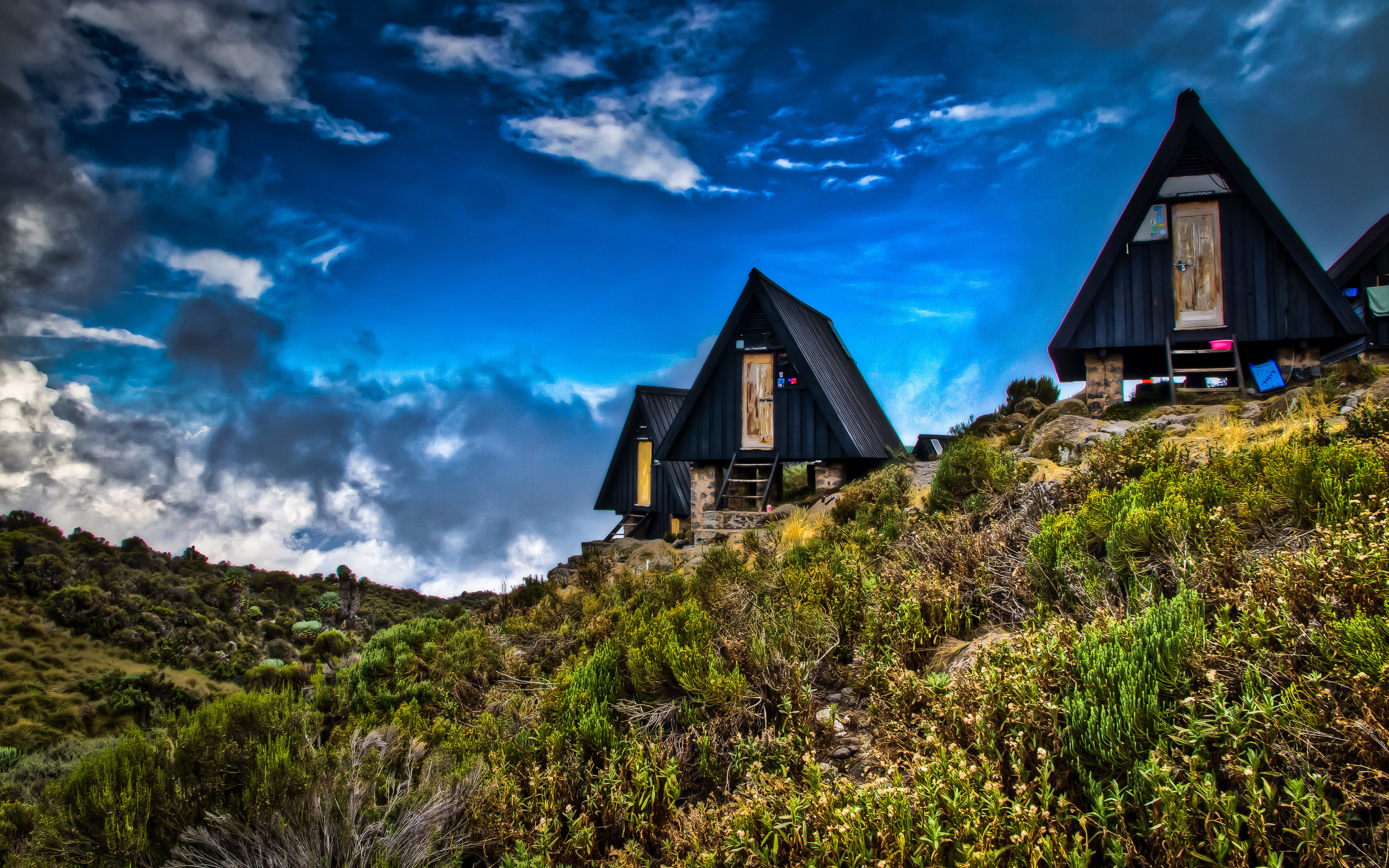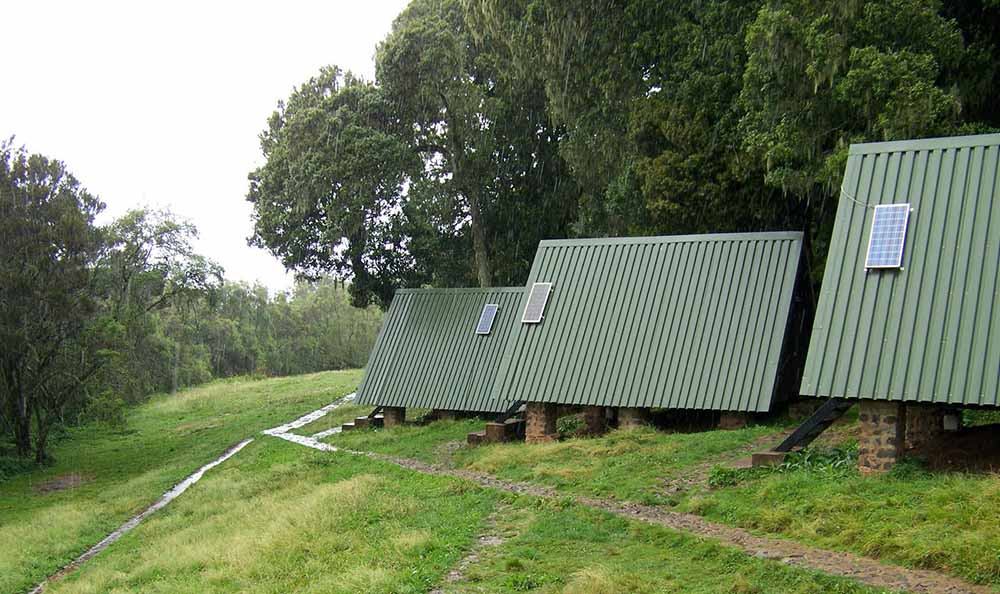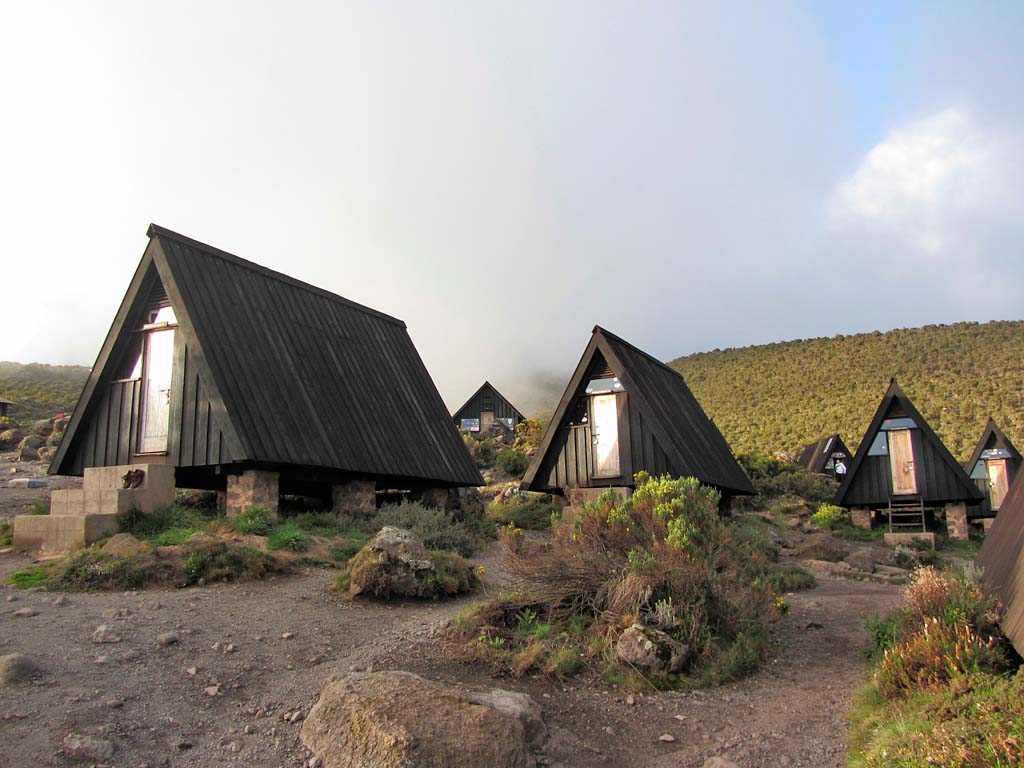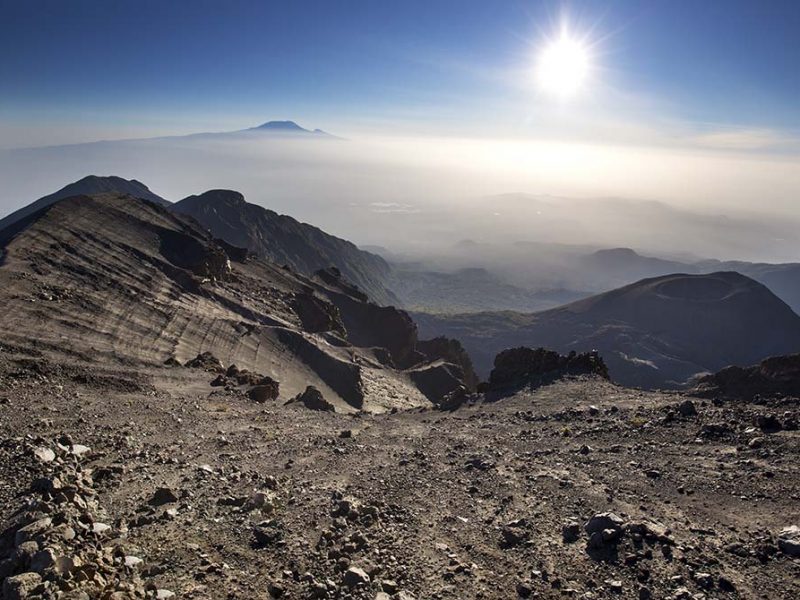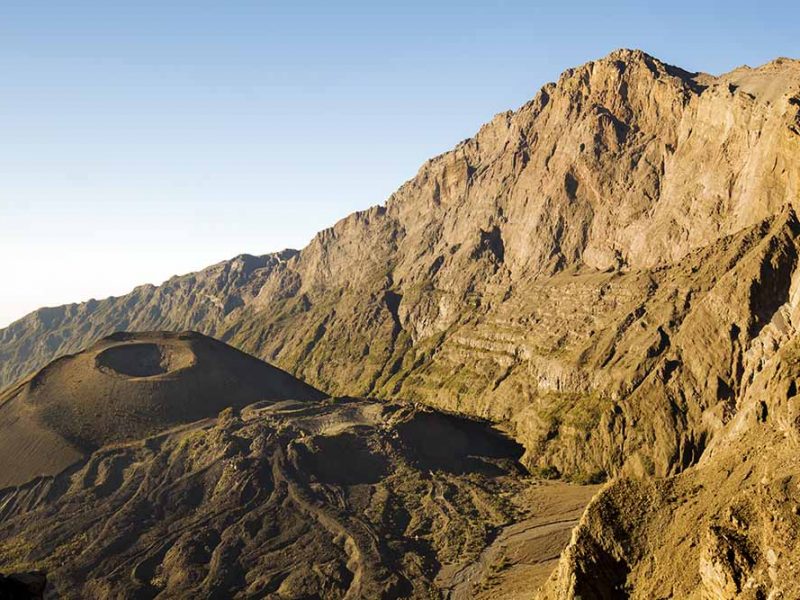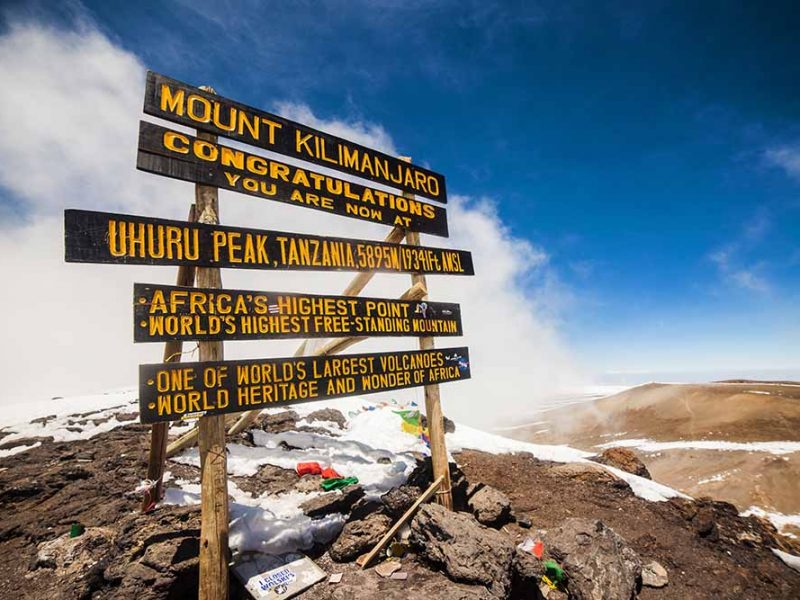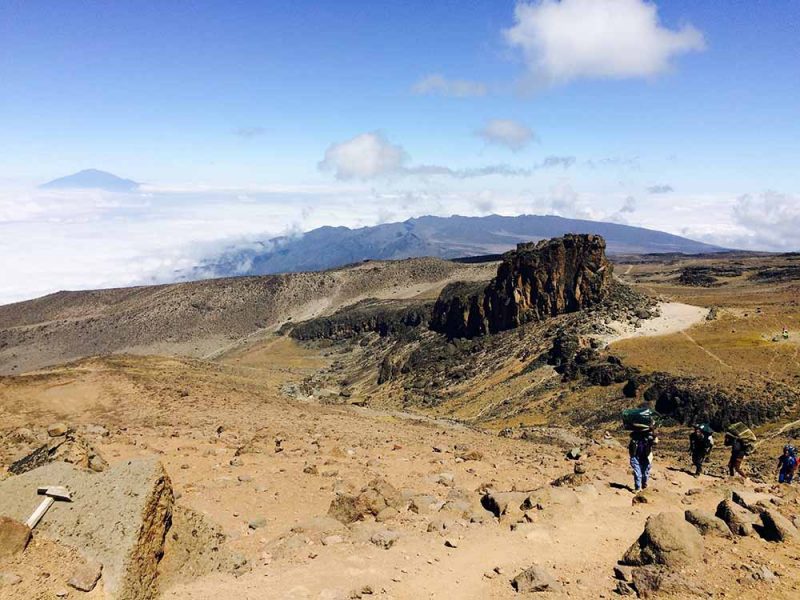
5 Days Marangu Route Kilimanjaro Trek
The Marangu route is one of the most popular routes to the summit of Kilimanjaro. This could partly be as a result of the fact that the Marangu is the least expensive route, but more so, perhaps the fact that it is possible to do the Marangu route in 5 days, thereby getting to the summit one day earlier compared to the Machame route. This is not always the best way, due to a shorter acclimatisation period. The Marangu route does however offer you the option of spending an extra acclimatisation day on the mountain.
This extends the route into a 6-day trek, greatly increasing your chances of success. Shared hut accommodation on the Marangu route forms one of the main differences, compared to the other routes. It offers you the relative luxury of being able to sleep in huts along the entire route. Mineral water, soft drinks, chocolates and beers are also sold at all the camps on this route. All your equipment and supplies are portered and a cook prepares all your meals.
Day 1: Marangu gate (1700m) – Mandara Hut 2740m – (5,500ft to 9,000ft)
After breakfast and briefing, drive to the Marangu village and proceed to Kilimanjaro National Park Gate (45 minutes), register at Kilimanjaro National Park Authority offices and commence the climb. Walk through the rainforest to the Mandara hut located at 9,000 ft / 2,740 m. A side trip to Maundi Crater is a good way to see the surroundings including Northern Tanzania.
Day 2: Mandara Hut (2,740m) – Horombo Hut (3700m) – (9,000ft to 12,100ft)
In the morning around 8:30 a.m after breakfast starting trekking to Horombo hut. After about 1 hour, you will leave the glades of the rainforest and follow an ascending path on the open moorlands to the Horombo hut. The view of Kibo summit and Mawenzi are both stunning and shinning in clear days. In most cases giant lobelias and grounsels are found on your way. Horombo hut is a point were most of the climbers uses it for acclimatization whereby they spend an extra day. Spending an extra day give a wide change for successful summit the roof of Africa.
Day 3: Horombo Hut (3700m) – Kibo Hut (4700m) – (12,100ft to 15,400ft)
In the morning after breakfast the trek will take us to the last watering point, walking onto the saddle of Kilimanjaro between the peaks of Kibo and Mawenzi. Vegetation begins with upper heartland but then disappears into desert like structure. At Kibo you will have your dinner, take a nap and at the middle of the night around 23:30 hour prepare for summit climb.
Day 4: Kibo Hut (4,750m/15,580ft) to Summit (5,895m/19,340ft) to Horombo Hut (3,720m/12,200ft)
Elevation Gain: 1,145 meters, 3,760 feet Elevation Loss: 2,175 meters, 7,140 feet Around midnight, awake for the final ascent to Uhuru Peak, the roof of Africa. The hike begins with a demanding five hour hike to Gillman’s Point on the crater rim. Although this is considered to be the easiest of the three crater ascent paths, it is still extremely difficult. The first major rest stop, William’s Point, lies at 5000 meters and is approximately a two hour hike Kibo Hut. Continue on for thirty minutes before beginning the rocky switchbacks that will continue to Gillman’s Point (5,681 meters). The hike from Gilman’s to Uhuru Peak is a gradual climb and as far as hikes go, not very difficult. The altitude, however, makes the hike long and tiring. The crater rim hike takes approximately two hours. Upon reaching Uhuru, take photos of your guide and group at the peak before beginning the descent to Horombo Hut. On the way down from the summit, you will see all of the magnificent views you could not see on the way up. Stop for a short break and snacks at Kibo Hut before continuing on to Horombo Hut. Reach Horombo Hut in the afternoon and enjoy your last night on the mountain.
Day 5: Horombo Hut (3,720m/12,200ft) to Marangu Gate (1,800m/5,905ft)
Elevation Loss: 1,920 meters, 6,295 feet After breakfast, finish the trek with a descent to Marangu Gate. Your last hike on Kilimanjaro is a beautiful one, passing through Kilimanjaro’s cloud forest. Watch your step during the descent, as the trail can be slippery. Our vehicles will be waiting at Marangu Gate to take you back to Moshi.
Included:
- Return transport from Arusha/Moshi to Mount Kilimanjaro
- Use of our professional Mountain Guides/potters
- Accommodation in Mountain Huts/tents where applicable
- Three meals a day while on the mountain
- All park entrance fees and Taxes
Excluded:
- All your climbing gears
- Personal insurance
- Personal spending money
- Tips for guide, potter and cook.


